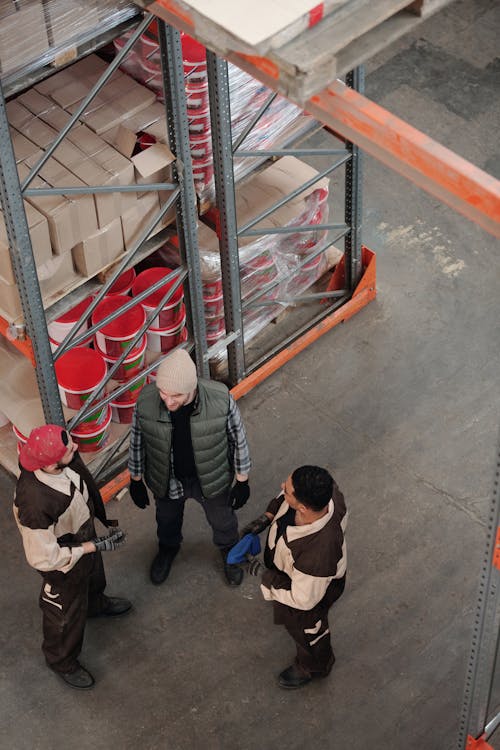Load dispatch and the Future of Logistics
Real-Time Load Dispatching and Trucking
According to the MC Logistics.io team of experienced logistics and trucking investment professionals, Load dispatching is an important function that provides the necessary coordination in the process of goods transportation from one place to another. There is load matching which entails allocating loads to drivers, shipment tracking and making sure that the freight gets to the intended destination on time and in optimized and satisfactory condition. The implementation and maintenance of an efficient dispatch process is an essential factor in satisfying the customer, managing fleets, cutting costs, and increasing profitability.
This article will endeavor to give a detailed procedure on load dispatching, detailing the mandate of the dispatcher, the procedure followed in handling the loads, together with the tools and technologies that can be employed to upgrade the process of load dispatching.
The Role of a Dispatcher
The dispatcher is responsible for actual load management The dispatcher fulfills the role of the communication bridge between the carrier, driver, and the customer. They are held accountable for allocating loads, selecting the best routes and deciding on a course of action each time there is a hitch on the way. Dispatcher performance skills include organization skills, communications skills, and a strong method of problem-solving. Their tasks include:
Assigning loads to drivers: Dispatchers have the rather complex task of making sure drivers take the proper loads with regards to the type of vehicle that they are driving, the availability of the driver, and the delivery schedules.
Route optimization: A dispatcher should be able to determine how the least amount of time can be used in transit, and how least fuel can be used while at the same time having to take into consideration the amount of traffic, weather and road conditions.
Tracking shipments: Scheduling dispatchers are supposed to track the timing of all the loads, keep each of them on track, and notify all interested parties.
Addressing issues on the road: In cases such as delays or breakdowns; traffic or mechanical faults; or even accidents in route, dispatchers need ways to rectify the situation for delivery to continue.
Communicating with customers: Customer care can be provided by dispatchers as they are the main contact between the company and the clients informing them about the whereabouts of their shipments.
Despite being crucial to the organization, dispatchers must be available with the right equipment and/or systems.

Steps to Dispatch Loads Efficiently
Dispatching of loads is a series of activities in which when performed will enhance organization of the flow of loads, time taken, and money used. Here’s a detailed breakdown of the load dispatching process:
- Load Assignment
The first principle of dispatching loads is allocation of loads to specific drivers and respective vehicles. This requires matching the load with the right resources based on several factors:
Vehicle suitability: Load dispatchers need to make certain that the transportation vehicle matched to the load does well in handling the load size as well as its weight and also the type of load. For example, refrigerator vehicles are necessary for perishable products while an open back trailer to transport bulky belongings.
Driver availability: Load planners have to consider driver’s availability, hours of service (HOS), and driver preference while assigning loads.
Driver proximity: Deadhead miles are those where a driver may not be carrying loads, and it is often best to offload to drivers already in the proximity of the pick-up location.
Driver experience: There are certain types of loads that can be carried only by experienced drivers who have received certain certification.
Thus, the choice of the best driver and vehicle is made, the load is then dispatched and all relevant information including the pick up location, delivery location, type of load, and any other additional information required by the driver is passed.
- Route Planning and Optimization
Optimal route search plays a pivotal role in cost of the total fuel consumption, time of travel, and with possible stopovers. Dispatchers use route optimization software to plan the most efficient path from pick-up to delivery, taking into consideration several key factors:
Distance and travel time: It is possible to have the shortest distance and still take longer time, so the dispatchers have to plan and compare the flow of traffic on different roads.
Weather conditions: Sometimes weather conditions that lead to such conditions as snow, heavy downpour or even fog may result in a delay in transport or actually lead to the creation of some of the worst road conditions. It shows how dispatchers are supposed to closely monitor the prevailing weather conditions in a specific route and change the route as appropriate.
Traffic congestion: There might be congestion in the urban areas during rush hour; therefore, the dispatchers may schedule the different routes that do not open to traffic during rush hours.
Regulatory restrictions: This means that depending on the route chosen, there could also be restrictions regarding the weight of the vehicle, its height or type of cargo, including the presence of hazardous material, something that would need to be taken into consideration.
Mobile route optimization allows dispatchers to save the driver’s time and fuel while still getting the deliveries done on time.
- Load Tracking and Monitoring
After a load is dispatched, the work of the dispatcher does not end. They have to follow and steer the shipment to ensure that all goes on without hitches. Most organizations apply GPS navigation and telematics to share the current status of each automobile in circulation. This allows dispatchers to:
Monitor delivery progress: From the locating of the dispatchers, it is also possible to determine movements of trucks as well as their arrival times.
Provide customer updates: If a customer calls or visits with any courier shipment inquiry, dispatchers are in a position to give accurate information now.
Address potential issues: There is always a scenario whereby a driver faces certain difficulties including traffic jam caused by an accident ahead, bad weather or even mechanical breakdown of the vehicle; dispatchers can easily act to alter the route or shift loads.
- Handling Issues and Delays
Even with the best planning, there may be obstacles like breakdowns, traffic congestion, or a crash that will affect Schwerpunkt’s delivery calendar. In a situation like this one, the role of the dispatchers becomes to quickly locate ways of addressing these issues early in order to prevent more disruptions. This can involve:
Reassigning loads: If a driver cannot deliver the load because his or her vehicle has broken down or for some other reason, the dispatcher will have to redirect the load to another driver or vehicle.
Rerouting: Sometimes drivers may be trapped By closed roads, traffic jams, or bad weather, and in such cases, the dispatchers have to kindly redeploy them.
Customer communication: Where latency is inherent, then dispatchers should ensure that they inform their consumers on the new timeline to expect the delivery.
Effective communication and problem-solving are key to minimizing the impact of unforeseen issues and ensuring that loads are delivered as close to schedule as possible.
- Completion and Documentation
After the delivery of a load, there is some paperwork and finalization of the dispatch process. Dispatchers need to:
Confirm delivery: Dispatchers make sure the driver formally finalizes the delivery and that the customer acknowledges reception of the products. This may also involve getting the electronic signature or any other means of proving proof of delivery (POD).
Update systems: The dispatchers update their TMS to note the delivery status of each shipment, as well as any comments that may have been made about the trip, stoppages or problems that were encountered.
Driver feedback: Distribution can involve surveying the drivers on their perceptions about the route used, the load or any difficulty that was encountered to inform future actions.
Invoicing: When delivery is made confirmation, the dispatch people coordinate with the accounting department to prepare and send out the invoices for the specific shipment.
Techniques and Instruments for Compelling Load Shipment
Load dispatching plans are somewhat complicated, and therefore, sophisticated methods and tools must be employed in the process. Below are some of the most commonly used technologies in modern dispatch operations:
- TMS stands for transportation management systems.
A TMS is an institutional method that enables dispatchers to oversee their transportation operations. It combines load planning, routing, tracking and reporting thus allowing dispatchers to manage all forms of shipping within a single platform.
Load management: A TMS enables the dispatchers to see all the loads which are on offer, allocating them to drivers and monitor their status in real-time.
Route optimization: In fact, many TMS solutions are equipped with a function of route planning to allow dispatchers to try to find the best routes.
Reporting and analytics: A TMS will present data that respect to such areas as delivery time, fuel consumption, and drivers’ effectiveness, thus making it easier for dispatchers to based on this information.
- GPS and Telematics
GPS tracking systems and Telematics give invaluable information as to the whereabouts and usage patterns of all vehicles in the fleet. Through this technology, load visibility can be used to track movements and plan accordingly to fit delays, traffic or other issues.
Real-time tracking: GPS allows dispatchers to know the location of each car at a certain time hence the ability to give correct information to the customer.
Driver behavior monitoring: These advanced technologies can monitor a driver’s behavior such as speeding, idling, and especially harsh braking which helps dispatchers to deal with safety issues and optimize performance.
- ELDs
Refer to equipment which is utilized for recording hours of service for vehicles on the road.
ELDs are electronic logbooks that help a driver maintain their HOS in compliance with regulatory compliance of the federal government. Primavera stated that this data is employed by dispatchers to check if drivers are legally compliant and to determine load distribution.
HOS compliance: The use of ELDs assists dispatchers avoid the instances where drivers are taken beyond the laid down maximum hours of service in order to avoid violation of the law.
Driver availability: It also works in line with the side of the dispatchers since they can view real-time data of the drivers to get a chance of matching him to the right load.
- Mobile Apps
Some of the ways in which organizations currently utilize technology include mobile applications that connect dispatchers with the drivers. This makes these apps so useful as they enable drivers to obtain load information, deliver new updates, and even talk to dispatchers without necessarily having to use their computers.
Real-time updates: The use of apps for mobile devices helps drivers to inform dispatchers regarding their progress in real time, thus easier to manage loads.
Proof of delivery: Electronically signed or photos of proof of delivery can either be taken through the app or uploaded.
Eight Important Tips for Load Dispatching
To optimize load dispatching and improve overall efficiency, consider the following best practices:
Use data-driven decision-making: Assets like TMS, GPS, and telematics data gives you information on loads to be allocated, routes to follow and driver performance.
Communicate clearly with drivers and customers: This is especially important to avoid misunderstanding that may cause a conflict between you and your employer/employees. This means that every driver and customer must always be informed with the right information as they are the major roles in the business.
Plan for contingencies: Things can go wrong, and you should prepare for the most typical problems to occur, like a breakdown, bad weather, or a closure of a critical road.
Optimize routes continuously: Schedules are created and should be updated frequently to enhance efficiency in terms of fuel usage, and time taken in transit.
Invest in the right technology: Support your dispatch team so they have what they need like dispatch software, GPS, and mobile application.
Conclusion
Effective load dispatching is the key to many logistics operations, and is founded on a well-designed dispatching system. Thus, when loading, determining the best routes, tracking and identifying the shipments’ location, as well as responding to forthcoming issues, dispatchers can guarantee on-time deliveries and increased operational performance. By using different methods of artificial intelligence and paying much attention to assignments, dispatches can be made quicker and cheaper, meeting all the needs of the clients.




